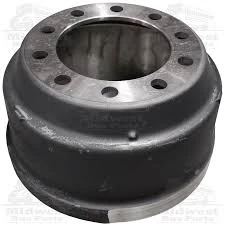
-
 Afrikaans
Afrikaans -
 Albanian
Albanian -
 Amharic
Amharic -
 Arabic
Arabic -
 Armenian
Armenian -
 Azerbaijani
Azerbaijani -
 Basque
Basque -
 Belarusian
Belarusian -
 Bengali
Bengali -
 Bosnian
Bosnian -
 Bulgarian
Bulgarian -
 Catalan
Catalan -
 Cebuano
Cebuano -
 Corsican
Corsican -
 Croatian
Croatian -
 Czech
Czech -
 Danish
Danish -
 Dutch
Dutch -
 English
English -
 Esperanto
Esperanto -
 Estonian
Estonian -
 Finnish
Finnish -
 French
French -
 Frisian
Frisian -
 Galician
Galician -
 Georgian
Georgian -
 German
German -
 Greek
Greek -
 Gujarati
Gujarati -
 Haitian Creole
Haitian Creole -
 hausa
hausa -
 hawaiian
hawaiian -
 Hebrew
Hebrew -
 Hindi
Hindi -
 Miao
Miao -
 Hungarian
Hungarian -
 Icelandic
Icelandic -
 igbo
igbo -
 Indonesian
Indonesian -
 irish
irish -
 Italian
Italian -
 Japanese
Japanese -
 Javanese
Javanese -
 Kannada
Kannada -
 kazakh
kazakh -
 Khmer
Khmer -
 Rwandese
Rwandese -
 Korean
Korean -
 Kurdish
Kurdish -
 Kyrgyz
Kyrgyz -
 Lao
Lao -
 Latin
Latin -
 Latvian
Latvian -
 Lithuanian
Lithuanian -
 Luxembourgish
Luxembourgish -
 Macedonian
Macedonian -
 Malgashi
Malgashi -
 Malay
Malay -
 Malayalam
Malayalam -
 Maltese
Maltese -
 Maori
Maori -
 Marathi
Marathi -
 Mongolian
Mongolian -
 Myanmar
Myanmar -
 Nepali
Nepali -
 Norwegian
Norwegian -
 Norwegian
Norwegian -
 Occitan
Occitan -
 Pashto
Pashto -
 Persian
Persian -
 Polish
Polish -
 Portuguese
Portuguese -
 Punjabi
Punjabi -
 Romanian
Romanian -
 Russian
Russian -
 Samoan
Samoan -
 Scottish Gaelic
Scottish Gaelic -
 Serbian
Serbian -
 Sesotho
Sesotho -
 Shona
Shona -
 Sindhi
Sindhi -
 Sinhala
Sinhala -
 Slovak
Slovak -
 Slovenian
Slovenian -
 Somali
Somali -
 Spanish
Spanish -
 Sundanese
Sundanese -
 Swahili
Swahili -
 Swedish
Swedish -
 Tagalog
Tagalog -
 Tajik
Tajik -
 Tamil
Tamil -
 Tatar
Tatar -
 Telugu
Telugu -
 Thai
Thai -
 Turkish
Turkish -
 Turkmen
Turkmen -
 Ukrainian
Ukrainian -
 Urdu
Urdu -
 Uighur
Uighur -
 Uzbek
Uzbek -
 Vietnamese
Vietnamese -
 Welsh
Welsh -
 Bantu
Bantu -
 Yiddish
Yiddish -
 Yoruba
Yoruba -
 Zulu
Zulu
Drum Brake vs Disc Brake
Drum Brake vs. Disc Brake Understanding the Difference
When it comes to vehicle braking systems, two main types dominate the market drum brakes and disc brakes. Both systems are designed to halt a vehicle's movement, but they operate on different principles and have distinct advantages and disadvantages. Understanding these differences can help consumers choose the right braking system for their needs.
Construction and Mechanism
Drum Brakes As the name suggests, drum brakes consist of a cylindrical drum that rotates with the wheel. Inside the drum are brake shoes that press outward against the drum’s inner surface when the brakes are applied, creating friction. This friction slows down the wheel. The design typically includes a spring mechanism that retracts the brake shoes when the pedal is released.
Disc Brakes In contrast, disc brakes utilize a flat disc (the rotor) that is attached to the wheel. Calipers, which house the brake pads, squeeze the pads against the disc when the brakes are engaged. The resulting friction between the pads and the disc slows the vehicle. Disc brakes often feature cooling vents or slots between the rotor's surfaces to dissipate heat, making them more efficient at maintaining performance during prolonged use.
Performance and Efficiency
In terms of performance, disc brakes generally outperform drum brakes, especially in high-stress situations such as fast stops or frequent braking. They provide more consistent stopping power thanks to better heat dissipation and reduced brake fade. This is crucial for performance vehicles or those driven in demanding conditions, such as mountainous terrains.
Conversely, drum brakes are more prone to overheating, which can lead to reduced efficacy. However, they offer stronger braking force at lower speeds. Due to their design, drum brakes can provide a mechanical advantage, making them suitable for small vehicles and older models.
drum brake vs disc brake difference

Maintenance and Durability
Maintenance is another essential factor when comparing these systems. Drum brakes can require more upkeep due to their enclosed design, which traps moisture and debris inside. This can lead to rust and component wear. Adjustments may also be necessary over time, as the shoes wear down.
Disc brakes, on the other hand, tend to be easier to maintain. The open design prevents dirt and moisture accumulation, and the wear on pads can be easily monitored. Additionally, disc brakes often have longer service intervals, reducing the frequency of maintenance.
Weight and Cost
In terms of weight, drum brakes are typically lighter than disc brakes, making them suitable for compact vehicles where weight savings are crucial. However, when it comes to cost, drum brakes are generally less expensive to manufacture and purchase, which has led to their continued use in budget-oriented vehicles.
Conclusion
In summary, both drum brakes and disc brakes have their unique advantages and disadvantages. Drum brakes are often more cost-effective and perform adequately for lighter, less demanding vehicles. Meanwhile, disc brakes excel in performance, particularly in high-speed and heavy-duty situations, offering better heat dissipation and maintenance benefits.
Ultimately, the choice between drum and disc brakes depends on the specific requirements of the vehicle and the driving conditions. Understanding these differences can empower consumers to make an informed decision that enhances both safety and performance on the road.
-
What Are Drum BrakesNewsJul.07,2025
-
Understanding Brake Drum MaterialNewsJul.07,2025
-
Semi-Trailer Brake Drum: A Key Component for Extreme Loads and Long-Distance TransportNewsJul.07,2025
-
Drum Brake Pads for SaleNewsJul.07,2025
-
Brake Drums for SaleNewsJul.07,2025
-
Brake Drum ManufacturerNewsJul.07,2025
-
Aluminum Brake Drums: The Future of High-Performance CarsNewsJul.07,2025
